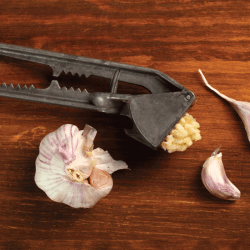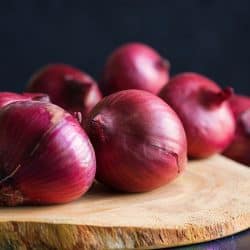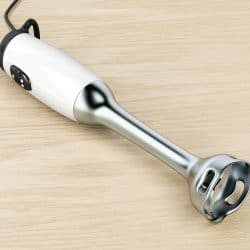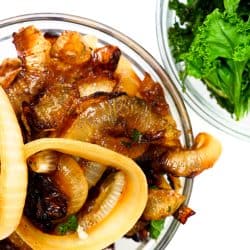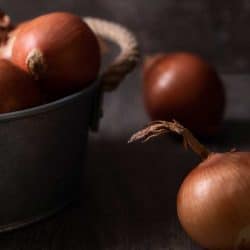Do you have a garlic press that has been shoved to the back of your kitchen utensil drawer, collecting dust? Have you ever wondered if your garlic press could serve more than one purpose for your culinary endeavors? We've researched the versatility of garlic presses and have found interesting results to share with you.
Yes, some garlic presses do work for crushing or juicing ginger. Many manufacturers include crushing ginger as a secondary feature, along with the ability to crush onions and nuts. To successfully crush ginger with a garlic press, the ginger should be peeled before placing in the press. Then squeeze the press. Crushed or juiced ginger should emerge.
Are you curious about learning more about how to use a garlic press effectively? Or if investing in a garlic press is worth spending your hard-earned money on? Various ways a garlic press could be used? We've thoroughly researched this subject. Would you please continue reading for a quality education regarding garlic presses?
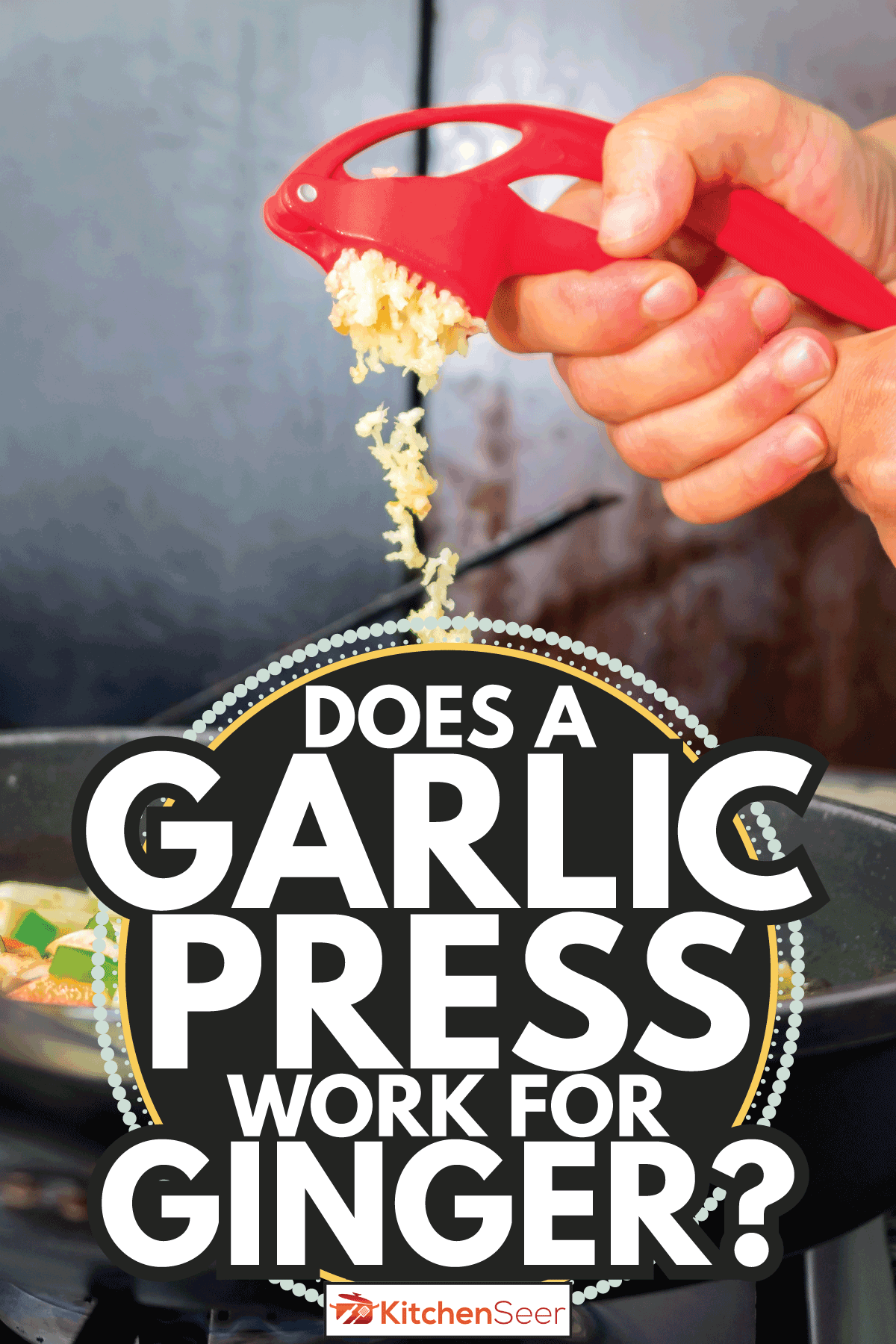
What else can you use a garlic press for?
Garlic presses serve a home cook or professional chef with many time-saving options. Firstly, well-prepared garlic doesn't require the cook to spend a lot of time cleaning and chopping garlic. Garlic presses can crush garlic while the garlic remains unpeeled. Beware that the garlic peel remains inside the press, and you will need to remove it after each clove or two passes through.
Crushing Onions
Also, garlic presses are good for crushing onions. Firstly remove the peel and cut the onion into smaller pieces that will easily fit inside the press. Then squeeze the press; you will have finely minced onions in a matter of seconds. The consistency of the onions will vary based on the type of onion used.
Crushing or Juicing Ginger
Crushing or juicing ginger is another function most presses offer. Peel the ginger, cut it into small pieces that will fit into the press, and close the press. Depending on the fibrous nature and of the level of hydration within the ginger, it will either process crushed ginger ideal for seasoning or ginger juice that could be added to drinks or marinades.
Processing small seeds and nuts
Another less popular use for a garlic press is processing small seeds and nuts; they are easily crushed in a garlic press. Consider breaking the nuts in half and fill the press 3/4 full and then squeeze. Avoiding overfilling the press will help ensure the crushed nuts have the same consistency.

Can you use a garlic press to crush ginger?
Many manufacturers have created garlic presses made to crush ginger and several other types of foods. Although, there are several on the market that do not crush ginger. Thoroughly read the product description before buying to ensure that the manufacture states that the press does work for ginger.
Never assume because if it works for garlic that it will work for ginger or nuts. Ginger is highly fibrous, and the press must be engineered well to crush the dense fibers of ginger.
Crushing ginger in a garlic press is quite simple. Firstly, wash and peel the ginger. Then cut into small pieces and place inside the press, and squeeze the handles. Crush ginger should emerge. If the ginger does not come out crushed, it could be because the ginger root is dry.
When the fibrous ginger root becomes dry from sitting in the refrigerator for weeks, it dries out. If it is too dry, the press won't be able to crush it thoroughly. One could use a food processor to chop the dehydrated ginger.
Click here to see a premium garlic press at Amazon.
How do you juice ginger with a garlic press?
Remove the skin from the ginger via peeling with a small knife or a spoon. Scraping the skin off with a spoon is a safe and minimal waste method for quick removal. In the next step, place the peeled ginger in the press and squeeze the press over a small bowl or measuring cup. Mainly juice will release, and most of the fibrous ginger will stay inside of the press.
Ginger is too fibrous to be minced by most garlic presses and will clog the press. That is why it is essential to read the product description and ensure that the press can handle ginger.
Click here to see a garlic press that is highly rated for ginger at Amazon.
Tips for cleaning the garlic press.
Always wash after using as soon as possible. Any dried bits of food that get trapped in the press become harder to remove the longer the press sits. Most garlic presses are not dishwasher-safe. Wash by hand with dish soap and warm water.
If stubborn debris is trapped inside the small holes and grooves, one could use a kitchen scrub brush or the cleaning tool that came with the press to remove it. Thoroughly dry the press by hand before putting it back in the drawer. Due to the grooves and metal mesh, garlic presses are susceptible to rusting easily.
Helpful suggestions for using a garlic press
Garlic will store for one month when kept in a cool and well-ventilated area. Avoid keeping the garlic near a stove or sink the dampness and heat will cause the garlic to decompose much quicker. If the garlic has any black or soft spots on it. Immediately, discard the garlic. Those are signs of decomposition and could make you or your loved ones ill.
Allow the garlic to warm to room temperature before peeling and crushing. Garlic is much easier to process when warm because the cloves will move through the press much easier. Also, removing the peels is much simpler when the garlic is at room temperature.
When preparing a large batch of garlic. Consider peeling the cloves first, removing the peel via the side of a large kitchen knife pressed on the garlic until you feel/hear a slight pop. Then slide the peel off of the garlic clove. By doing so, you can crush many cloves without repeatedly removing the peels from the press.
Is a garlic press worth it?
Whether you are a home cook or a seasoned professional, you could benefit from owning a garlic press. However, a few points to consider before adding a garlic press to your collection of kitchen utensils. How much garlic or other types of food do you crush regularly. Are you interested in time-saving kitchen tools?
The pros: not having to peel garlic. Avoid having your hands smell like garlic for hours or days—a handy way to juice ginger for health tonics or adult beverages. Reduce stress for your hands and wrist. Crushing nuts for a pesto recipe. Cons: having an additional utensil to wash and store.
The pros outweigh the cons for increased efficiency and avoiding smelling like garlic. Consider creating a mental checklist of why this kitchen tool could benefit your unique kitchen before shopping for a garlic press. Also, have a list of features you want the press to have, such as dishwasher-safe, accompanied by a small cleaning tool, rust-proof, etc.
In closing
Hopefully, this article has helped you to decide whether to invest in a garlic press or continue to process garlic by hand. Or, if you already own a garlic press, you have new ideas for using it in the future. Are you enjoying learning more about kitchen tools? Please visit Kitchenseer.com soon for more quality culinary content.



